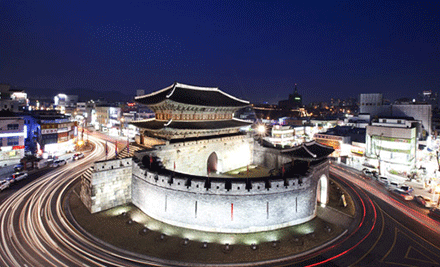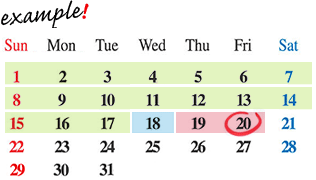Must do Seoul
SUWON HWASEONG FORTRESS & KOREAN FOLK VILLAGE FULL-DAY TOUR
-
- Price
- 115,000 KRW / Person
- Minimun Pax
- 2 People
- Time
- Daily 09:00am ~ 17:00pm
- Inclusion
- Transportation, English-speaking Tour Guide, Admission Fees, Hotel Pick-up/Drop-off Service, Lunch, VAT.
- Exclusion
- Personal Expenses.
Tour Course
-
- Hotel
- Suwon Hwaseong Fortress
- Hwaseong Tour Train
- Hwaseong Haenggung (Hwaseong Temporary Palace)
- Lunch (Bibimbap)
- Korean Folk Village
- Amethyst or Ginseng Center
- Hotel.
Highlights
-
-
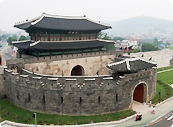
-
- Suwon Hwaseong Fortress
- Suwon Hwaseong Fortress is an impressive structure from the latter part of the Joseon Dynasty and the official fortress of Suwon-si, Gyeonggi-do. The fortress (constructed from 1794 to 1796) was built as a show of the King's filial piety towards his father Jangheonseja and to build a new pioneer city with its own economic power. The fortress wall stretches for a total of 5.52km and has a great variety of military facilities that's hard to find anywhere else. Four gates face each of the cardinal directions and the seven-arch style Sumun gates straddle the point where the nearby stream reaches the palace. The fortress was designated as Historical Monument No. 3 in January 1963, and in December 1997, it was designated a UNESCO World Cultural Heritage Site.
- Suwon Hwaseong Fortress
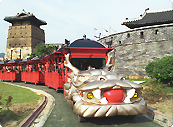
-
- Hwaseong Tour Train
- The Hwaseong Trolley of the power car and three passenger cars. The front of the power car has the form of dragon head to symbolize the royal authority of King Jeongjo and its strong driving force. Passenger car resembles the king's sedan chair to display the royal authority and for the conveniences of spectators.
- Hwaseong Tour Train
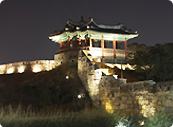
-
- Hwaseong Haenggung
- Haenggung means a shelter where King rested or retired from a war and Hwaseong Haenggung castle is the biggest one of these shelters; Kings used them since the Jeongjo King period. This is the temporary palace where King Jeongjo stayed at the time of Wonhaeng (long journey) and also where he held a splendid feast on Hyegyeonggung Hong, his mother's 60th birthday and more other events. Especially Nangnamheon is the place where King Jeongjo threw a party for soldiers to commemorate the 60th birthday of Hyegyeonggung Hong, his mother, and awarded certificates to successful candidates at special national exams here.
- Hwaseong Haenggung
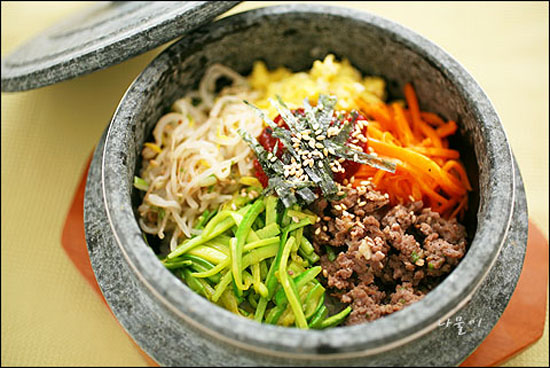
-
- Lunch(Bibimbap)
- Bibimbap is a signature Korean dish. The word literally means "mixed rice". Bibimbap is served as a bowl of warm white rice topped with namul (sautéed and seasoned vegetables) and gochujang (chili pepper paste), soy sauce, or doenjang, a salty soybean paste. A raw or fried egg and sliced meat (usually beef) are common additions. The hot dish is stirred together thoroughly just before eating.
- Lunch(Bibimbap)
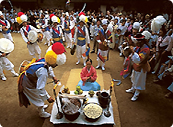
-
- Korean Folk Village
-
Set in a natural environment occupying approximately 243 acres, visitors can experience the natural atmosphere with over 260 traditional houses reminiscent of the late Joseon Dynasty, including various household goods from different regions. All these features have been relocated and restored to provide visitors with a broad understanding of Korean food, clothing, and housing style of the past.
About twenty workshops, various handicrafts such as pottery, baskets, winnows, bamboo wares, wooden wares, paper, brass wares, knots, fans, musical instruments, iron wares and embroidery are practiced. In the Korean Folk Village, where the customs and lifestyles of the past generations have been carefully preserved, various lifestyles prevalent during the Joseon Dynasty can be seen.
You can visit the Folk Museum as well as the Art Museum (scheduled to open) to see and learn about the essence of Korean culture and folk customs, which are not suitable for display and re-creating in the open-air setting.
Korean Folk Village is also the filming location for the famous movie Scandal as well as the TV miniseries Daejanggeum.
- Korean Folk Village
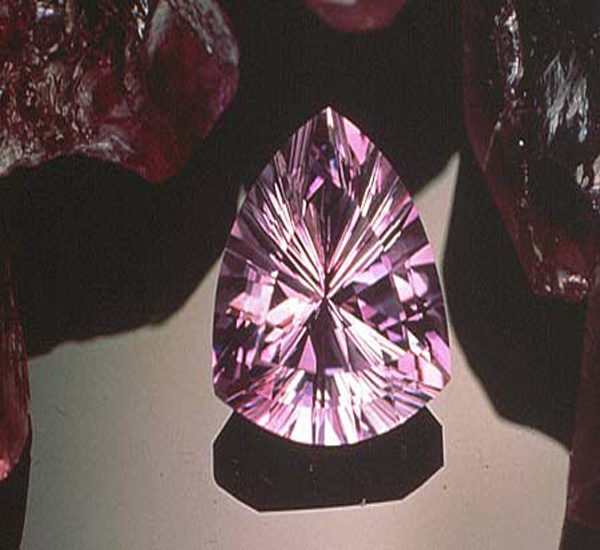
-
- Amethyst or Ginseng Center
-
The colour of Amethyst is as unique as it is seductive, though in fact this gemstone of all gemstones is said to protect its wearer against seduction.
Korean Amethyst is extravagance in violet since it has been formed from granite stone base since 5000 years. Moses described it as a symbol of the Spirit of God in the official robes of the High Priest of the Jews, and the Russian Empress Catherine the Great sent thousands of miners into the Urals to look for it. It was said to protect crops against tempests and locusts, bring good fortune in war and in the hunt, drive out evil spirits and inspire the intellect.
- Amethyst or Ginseng Center
-


